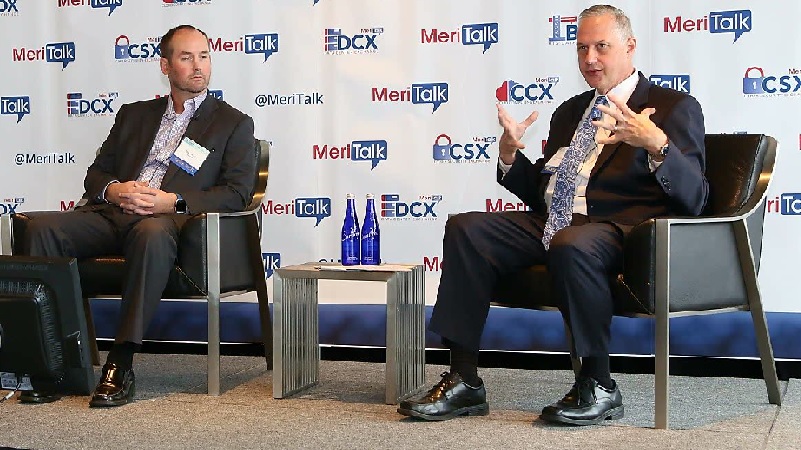
The Department of Justice (DOJ) plans to have three physical data centers by 2019, according to Mark Busby, program manager of data center transformation for DOJ.
Busby, who spoke at MeriTalk’s Accelerating Data Center Transformation event on Oct. 27, said DOJ has closed 64 percent of its data centers, and still maintains between 30 and 40. Federal agencies started the process of shutting down data centers in 2010, when the Office of Management and Budget (OMB) launched the Federal Data Center Consolidation Initiative (FDCCI) mandating that Federal agencies reduce the cost of data center hardware and their data center energy expenses. The White House’s Data Center Optimization Initiative (DCOI) took over FDCCI in August 2016, and required agencies to continue closing these hardware houses in the hopes of reducing the cost of Federal data centers by 25 percent by 2018.
Busby said that he and his team are still working to optimize data centers and shared services, as well as manage colocation facilities. Colocation facilities offer space, power, heating, and cooling for agencies seeking to store hardware.
“Some things we need to own and we need to keep,” Busby said. “The less I get to put into physical data centers, the better. Let’s get out of the business of owning hardware if we can.”
Miles Auvil, national sales manager of data center solutions at Siemens, said that data center operators often struggle with managing their facility’s energy footprint. He used the example of one facility manager who claimed his building had certain hot spots, but he could turn the place into an ice staking rink, without considering the energy impact of his actions. However, Auvil said that data center operators are gradually becoming more comfortable with proper energy management. For example, he cited a facility in Colorado that has a thermal maze beneath the structure that acts as a battery, heating the building.
One solution to linking energy data to energy-saving practices is Data Center Infrastructure Management (DCIM) tools, according to Auvil. DCIM tools measure data center energy consumption, which facility managers and agencies can use to find solutions for reducing the energy footprint. Busby agreed that DCIM is a useful tool in reducing energy excess at data centers, as it provides facility managers and agencies with a common set of information off of which they can base decisions.
“DCIM will be a secret sauce. It’s going to inform us on acquisition more than anything,” Busby said. “We’ll have a common language.”
Editor’s note: This story has been updated to reflect that DOJ closed 64 percent of its data centers.
